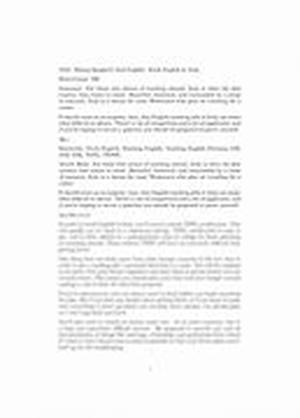
KWD: 11450 2.44Patent LawsPatent Laws Grant An Inventor The Right To Exclude Others From Producing Or Using The Inventor's Discovery Or Invention For A Limited Period Of Time. U.S. Patent Laws Were Enacted By Congress Under Its Constitutional Grant Of Authority To Protect The Discoveries Of Inventors. The Main Body Of Patent Laws Concerning Patents Is Found In Title 35 Of The United States Code. Patent Laws Grant A "bundle Of Rights", Specifically The Rights To Prevent Others From:1. Making;2. Using;3. Selling; Or 4. Offering For Sale The Patented Invention. Patent Laws Specify That For The Invention To Be Patented It Must Be Novel, Useful, And Not Of An Obvious Nature. Specific Additions To The Patent Laws Provide, In Addition, For Design And Plant Patents. UTILITY - To Be Patentable, An Invention Must Be Useful. This Requirement Is The Most Often Ignored Statutory Requirement For Patentability, As It Is Intuitively Difficult To Understand Why Someone Would Seek Patent Protection For An Invention That Was Not Useful. Indeed, An Inventor Is Generally Motivated To Seek Patent Protection In An Attempt To Profit Financially From His Endeavors. However, Some Showing Of Utility Is Required By Patent Laws When Seeking Patent Protection For Inventions Whose "real World" Value May Be Difficult To Gauge Or Substantiate, Such As Chemical And Pharmaceutical Compounds. NOVELTY - To Be Patentable, An Invention Must Also Be Novel, Or New. Patent Laws May Define Legal "novelty" In Great Detail, In General Practice, There Are Only A Few Basic Patent Laws That Need Be Considered In Analyzing Whether An Invention Is Novel.No Patent Protection Is Available For: An Invention Known Or Used By Others In The U.S. Prior To The Date Of Invention By The Applicant. An Invention Patented Or Described In A Printed Publication Anywhere (U.S. Or Abroad) Prior To The Date Of Invention By The Applicant. An Invention Patented Or Described In A Printed Publication Anywhere (U.S. Or Abroad) More Than One Year Prior To The U.S. Filing Date Of The Patent Application. An Invention In Public Use In The U.S. More Than One Year Prior To The Filing Date Of The Patent Application. An Invention On Sale In The U.S. More Than One Year Prior To The Filing Date Of The Patent Application.NONOBVIOUS - To Be Patentable, An Invention Must Not Be Obvious. Obviousness In Patent Laws Mean An Invention Is Not Patentable If, Considering The Prior Art That Existed At The Time Of Invention, The Invention Would Have Been Obvious To A Person Of Ordinary Skill In The Art. Secondary Considerations Of (1) Commercial Success; (2) Long-felt Need; Andor (3) Commercial Acquiescence Can Factor Into Such Arguments.





